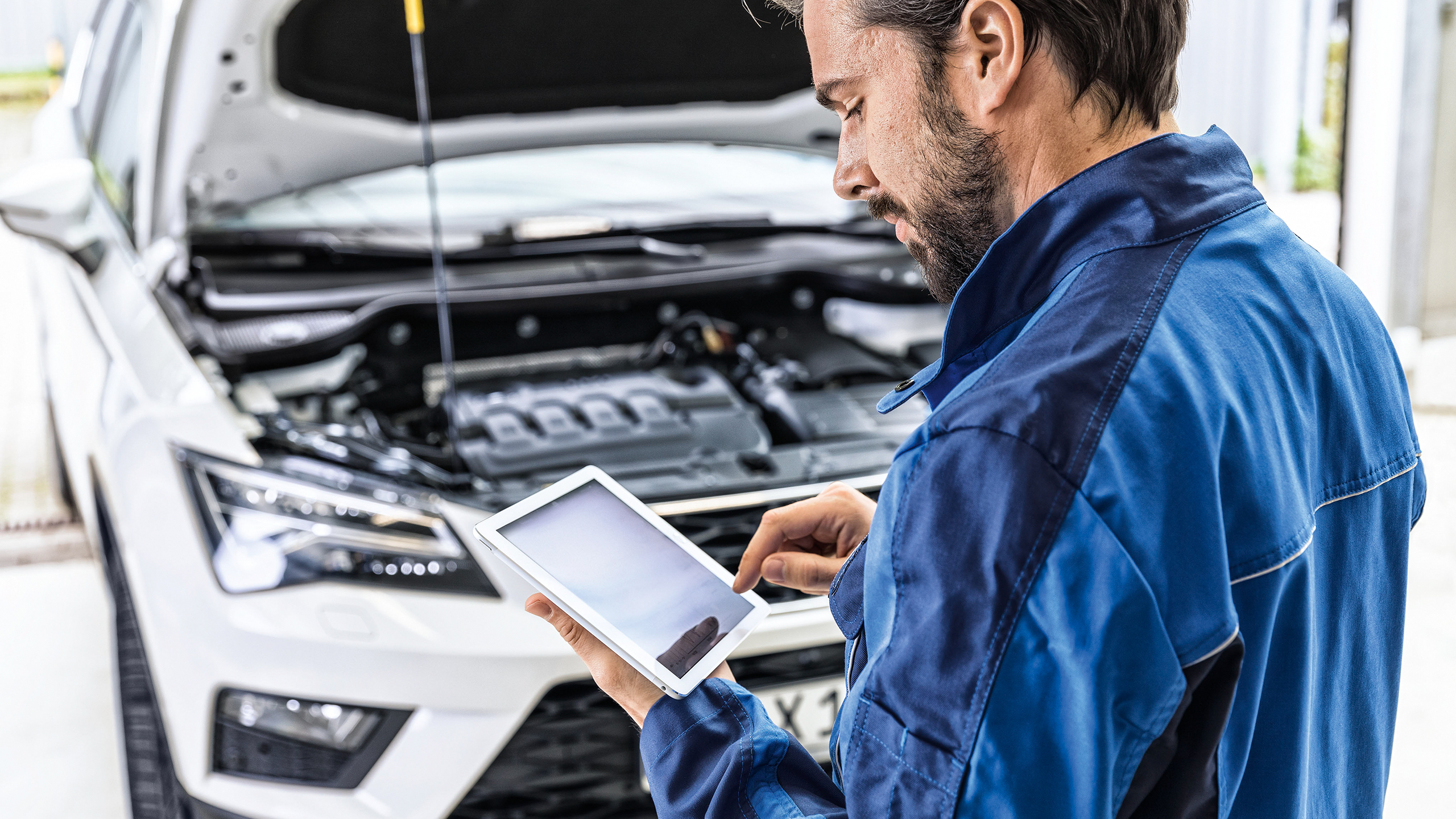Digitization at Any Price?
Predictive vehicle maintenance: opportunity and challenge alike
At first sight, things would seem to be clear: for almost 15 years, predictive maintenance has been discussed as a technology from which all customers and companies benefit in the automotive environment. Unfortunately, this assumption is not easy to prove in the type of mobility we practice. Even the very latest cars benefit little or not at all from this technology although other sectors, such as aircraft turbine manufacturers, have introduced this solution almost across the board during the same period. The reasons for this as well as strategies for successfully using predictive maintenance are being examined by Consulting4Drive, the IAV Group’s management and innovation consultancy, in various projects and research activities.
So far, predictive maintenance has been the most promising step in developing maintenance strategies. Its precursors are reactive maintenance from the 1990s, preventive maintenance from the turn of the century and state-based maintenance which has been in use since 2010. Today, monitoring not only covers the state of vehicle components. Values measured by sensors are also used for computing the probability of an imminent failure and, if necessary, for recommending a timely visit to the repair shop. No longer entirely new, the approach by and large promises to avoid system downtimes. It has already proven its worth for large generators, machines and commercial vehicles where it is state of the art.
It only seems logical to provide smaller-type vehicles with a system of predictive maintenance as well – particularly with changed market demands speaking in favor of it and with advancing digitalization opening up new opportunities. The consumer focus is moving away from owning a vehicle and shifting towards mobility services. In other words: the hardware is less important for the consumer. That’s important is the availability and promised benefits of a vehicle. This is why zero downtime must be the manufacturers’ aim, within the sense of making mobility available whenever it is needed. This makes it possible to maximize person and ton kilometers per time unit. Predictive maintenance is just one way of reaching this goal.

Business case: cost-benefit analysis
But what does the cost-benefit analysis look like? In some applications, the benefits clearly prevail. Commercial vehicles need to run at optimum capacity which is why the additional costs for predictive maintenance, and hence the prevention of unscheduled downtimes, are of minor significance here. Less obvious is the situation for privately used vehicles because a temporary breakdown does not immediately result in major financial loss. Or with automobile fleets that return vehicles to the usedcar market before any damage occurs (e.g. 25,000 kilometers for German hire car providers). Here, careful consideration must be given to deciding whether there is a business case for predictive maintenance. In addition, for vehicle manufacturers, aftersales are a central mainstay of today’s business model, based on sales, maintenance and repair. This, too, is becoming part of the digital transformation.
Predictive maintenance can also reduce costs in terms of design and dimensioning. Today, many components are over-dimensioned (“over-engineering”) and trimmed for maximum robustness. However, most customers do not derive any benefit because they never take vehicles to their load limits. Applicationoptimized components would be more costeffective, in many cases also lighter and in most instances as reliable as hitherto. For the remaining share of customers, predictive maintenance would also be able to identify problems at such an early stage that those involved would hardly need to accept any reduced availability as a result of timely repair. The value promise to the customer can be guaranteed.
“Predictive maintenance is the description of a technology that permits zero downtime and is not a strategy initiative. It is important for predictive maintenance not to be driven by any technical monitoring capability in the way we often see in technical development work. Instead, we are witnessing a strategy focus on the range of available services rather than products and components. Everyone is talking about ‘mobility as a service’ and predictive maintenance will be a key enabler and competitive edge for all mobility providers, from IAV and component suppliers to the OEMs”, reports Dr. Sebastian Kahlbau from Consulting4Drive (C4D). Martin Schnackig, also one of C4D’s consultants, emphasizes the need for clear business models with high realization potential because today, existing technology is often initially sufficient. “All decisions should be based on precise models that provide an exact comparison of the costs and benefits of the new technology and explicitly demonstrate the added value for everyone involved.” Given its many years of project experience working with IAV, C4D can draw on methods and networks on the basis of which predictive maintenance can be assessed both objectively and economically.
Technical implementation
Together with IAV, C4D’s experts can also provide advice across every aspect of technical realization. “Here, for example, the focus is on whether additional real-world sensors are needed for predictive maintenance and whether or not the existing measurement technology can be used for model-based development of virtual sensors”, Kahlbau says. “Overriding questions also need answering: where will the data be evaluated? Who is responsible for this – the OEM or a third-party provider? What will fleet management look like? Many players have positioned themselves in all fields of the technological chain of cause and effect through takeovers and holdings, and are now looking for the way to implement this in practice.” Besides consultancy, C4D also provides the service of managing entire highly strategic projects, including the provision of certified projectmanagers.
Intelligently implemented, predictive maintenance can be a facet of digitalization the customer can directly experience, with a positive impact on its image. “In future, customers will no longer only pay for the product”, says Dr. Kahlbau. Schnackig adds: “They will expect a high level of availability. Good service from a repair shop will lose significance as the promised benefits increasingly move into the focus.”


